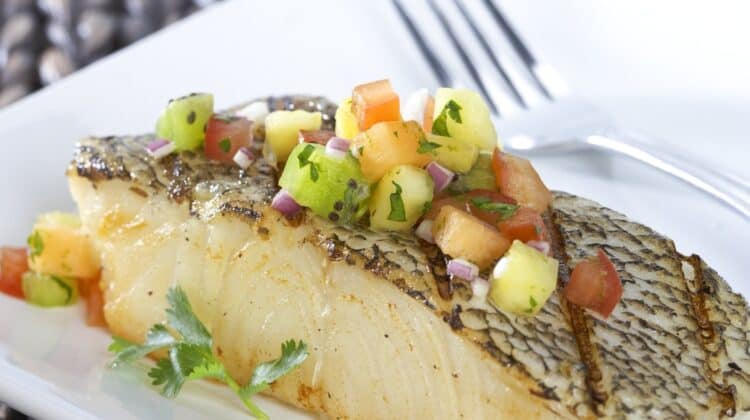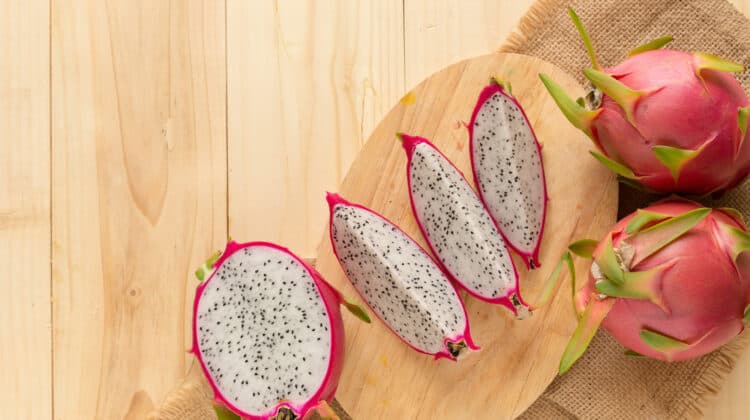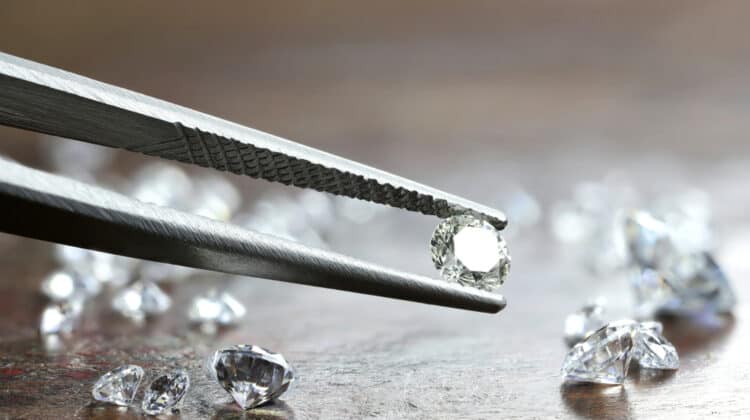
Homeowners that want to add some color to their yard should think about attracting certain birds.
Not only do birds add some life and color to the yard, but they’re also enjoyable to watch.
Blue jays are striking birds with active lifestyles.
If you want to attract blue jays to your yard, then there are a few things you can do to make your yard more attractive to them.
Here are 15 tips for attracting blue jays to your yard.
15 Tips To Attract Blue Jays To Your Yard

Supplying the right kind of food, water, and shelter will entice blue jays to your yard.
Follow these tips if you want to attract blue jays to your yard fast.
1. Peanuts

Peanuts are a rich source of energy for birds.
They’re also safe for them to eat.
You can either choose to keep the peanuts in the shell or de-shell them.
There are certain types of peanuts that you should avoid, however.
Peanuts that include salt or sugar can be unhealthy for birds.
Sugar, especially, can be hazardous to their health if they eat too much of it.
You should also avoid feeding them peanut hearts and raw peanuts.
The healthiest type of peanut is the roasted variety.
During the winter, you can also feed them peanut butter.
Peanut butter is easier for them to eat.
Refrain from feeding it to them in the summer.
Peanut butter can melt and turn rancid under the hot sun.
One problem you’ll face serving peanuts is that it will also attract squirrels.
You can prevent squirrels from stealing the peanuts from the blue jays by using a feeder specifically made to keep squirrels out of it.
Peanuts will also attract other birds to your yard.
Some other birds that love eating peanuts include:
- Woodpeckers
- Magpies
- Chickadees
- Nuthatches
- Sparrows
- Titmice
- Cardinals
- House finches
Serving roasted peanuts will attract blue jays and other birds to your yard.
2. Mealworms
Another fast way to get blue jays to your yard is to feed them live mealworms.
It’s an effective solution because mealworms are similar to the natural diet of birds.
They’re drawn to the food.
Mealworms are also fresh which is tastier for blue jays.
Live mealworms are useful for the spring and summer months.
They won’t last long during the winter.
Considering that live mealworms are expensive, you don’t want to waste your money needlessly.
Another cheaper option is dry mealworms.
They’re preserved and dried like jerky.
Dried mealworms are perfect for the winter months because they can last for several days.
They’re also cheaper because they’re easier to mass-produce.
Mealworms are nutritious for blue jays.
They contain fat, fiber, and plenty of protein.
While dried mealworms have a set amount of nutrition in them, you can make live mealworms more nutritious for blue jays.
Place the mealworms in a bucket with a screen for them to breathe.
Then place sliced apples, oatmeal, and bran in the bucket with them.
Let the mealworms eat this diet for two days before you feed them to the birds.
You can also put the bucket in the fridge to slow the growth of the mealworms if you’re worried about them growing too fast.
Once you’re ready to serve the mealworms, you can place them on a rimmed dish or in a platform feeder.
3. Cracked Corn
Many homeowners will fill their bird feeders with dried kernels.
While that’s an inexpensive way to feed birds, there’s an even better option.
Cracked corn is like dried kernels except that it’s smaller.
This makes it easier for birds like blue jays to eat.
If you have a regular feeding schedule, then you can expect blue jays to settle in your yard.
They will nest in areas where they can expect to find food.
Cracked corn is affordable which makes it easy to stock on and feed throughout the year.
Because it’s dry, you can feed cracked corn to blue jays in the summer and winter months.
Cracked corn is healthy for blue jays.
It’s full of protein and fiber.
It also contains healthy oils.
You can use a bird feeder specifically made for holding cracked corn.
Other types of feeders that use a container system work, too.
Squirrels also like eating cracked corn, so you’ll want to invest in a feeder that is squirrel-proof.
4. Sunflower Seeds
If you want to attract blue jays to your yard, then you can do so by giving them treats.
One treat that several types of birds enjoy is sunflower seeds.
Sunflower seeds come in two different types.
You can feed them seeds that are either in the shell or out of the shell.
Sunflower seeds are full of fat and oil.
That’s why feeding blue jays too many sunflower seeds can make them ill.
It’s a better idea to mix sunflower seeds with other types of food like cracked corn or peanuts.
Another thing to watch out for with sunflower seeds is if they’ve started to sprout.
If so, then don’t feed them to the blue jays.
It can also make them ill.
Sunflower seeds become moldy over time, so you’ll want to check for mold before you fill the feeder.
Sunflower seeds are nutritious for blue jays.
They contain nutrients like B vitamins, vitamin E, zinc, magnesium, and protein.
They’re also an inexpensive way to feed blue jays.
Since many types of birds enjoy eating sunflower seeds, you’ll see more than only blue jays in your yard.
As with the peanuts, you will want to avoid any variety of seeds containing salt or sugar.
Finally, you can put sunflower seeds in your feeder throughout the year.
5. Small Fruits

Blue jays are one of the species of birds that eats fruit.
Not all birds do.
Fruit provides sugar that can help them survive by adding to their energy stores.
The easiest way to provide fruit for blue jays and attract them to your yard is to plant a fruit tree or bush.
That way, the tree or bush will continue to grow fruit for the birds to eat over time.
It saves you money since you don’t need to go out and buy fruit.
Blue jays will eat fruit that isn’t ripe or is too ripe.
If you end up with fruit that you can’t eat, then you can put it in your yard for them instead.
Depending on the type of fruit, blue jays will either eat the rind, drink its juice, or eat the pulp.
If you dry your fruit, then you can also attract blue jays to your yard with dried fruit.
It isn’t as appetizing as fresh fruit, but it’s a great way to give them fruit during the winter months.
You should also consider leaving the fruit on the tree or bush during the winter.
Migrating birds will often stop to eat it on their journey.
Some small fruits that blue jays enjoy are:
- Apples
- Cherries
- Plums
- Oranges
- Concord grapes
- Strawberries
- Pumpkins
- Raisins
- Pears
Feed small fruits to blue jays with a fruit feeder or by laying them on the ground.
Be aware that squirrels will attempt to eat the fruit, too.
6. Berries

Berries are another great food for blue jays.
Like fruit, they offer sugar which is useful during the mating and nesting seasons.
Berries are also ideal for blue jays because they’re small and easily carried.
It helps them feed their babies.
Blue jays will even eat berries that are toxic to humans.
Some berries that you may want to consider buying are:
- Mulberries
- Elderberries
- Blueberries
- Raspberries
Planting berry bushes will ensure that your blue jays have regular access to them.
You can also freeze berries and keep them for the winter months.
7. Plant Nut Trees

If you want to attract blue jays to your yard, then you need to give them a reliable food source.
One way to do that is by planting a nut tree such as oak or beech.
The tree sheds its nuts and gives blue jays plenty of food to scavenge.
You can also plant large conifer trees.
Nuts are ideal for blue jays because they have tons of protein and fats.
These types of trees also offer shelter.
8. Use Large Bird Feeders
Blue jays are among the larger songbirds.
Because of that, they can’t always use bird feeders designed for songbirds.
Those types of feeders are often too small.
If blue jays feel that a feeder is too small or unsteady, then they won’t use it.
The small feeder can also make it difficult for them to gain access to the food.
To attract blue jays to your yard, you need a feeder that fits them.
Platform feeders are especially friendly towards blue jays.
For nuts, you’ll want to use a feeder that uses a mesh system.
Spring feeders are also ideal for blue jays.
Once you have the right-sized feeder, blue jays will be more willing to linger in your yard.
9. Choose A Large Birdbath
Birdbaths are useful for a few different reasons.
The primary reason is that it allows birds to clean themselves.
Because birds can carry diseases, allowing them to clean themselves can make them healthier as a whole.
Another reason birdbaths are useful is that they offer a source of drinking water.
Birds are especially nervous around water sources.
It’s easy for any kind of predator to hide and lurk, and then attack them while they’re drinking.
Birdbaths can give blue jays a safe place to drink water.
To ensure you’re choosing a birdbath that will support blue jays, you need to look for basins that have a deep dish.
Blue jays need deeper water to bathe in than other songbirds.
The basin also needs to be wide enough that a few blue jays can fit in it.
Blue jays often like to stick around their families.
If you want to encourage the entire family to come to your yard, then a wide birdbath can do that.
While a smaller birdbath can still help them have a source of drinking water, it can inhibit their ability to bathe.
Choose a large birdbath to attract blue jays to your yard.
10. Add Small Fountains
The size of the birdbath isn’t the only important detail to consider.
Birds like moving water.
The sound and movement of it are what tells them there’s water available in the first place.
If you want blue jays to be aware that you have water for them, then you need to make your birdbath move.
One way to do that is to add a fountain.
Small fountains that squirt water around are something that birds love.
They often use the fountains like showers or a source of drinking water.
If you don’t want to use a fountain, then you can also find small jets that provide a gentle stream in your birdbath.
Moving water is useful because it helps keep the water from becoming stale.
It also makes it more difficult for things like algae and moss to grow in the birdbath.
If your birdbath has either of things, then it can dissuade blue jays from using it.
Add either of these systems to your birdbath to encourage blue jays to settle in your yard rather than your neighbor’s.
11. Keep Water Heated
One final tip for your water source is to keep it heated.
If you live in an area that becomes cold during the winter, then you know that your birdbath is going to freeze.
Blue jays still need access to water.
Luckily, there are heating elements that you can attach to your birdbath.
It keeps the water at a warm enough level to prevent freezing.
Not only will this make the water more enjoyable to drink and bathe in, but it also ensures that there’s always water around that isn’t frozen.
If blue jays have a reliable source of water throughout the year, then they’ll stay in your yard.
Blue jays are among those birds that don’t usually migrate.
They stay near the areas where they nest.
If you can encourage blue jays to stay in your yard during the summer, then a warm birdbath will ensure you keep them there through the winter.
12. Plant Coniferous Trees

Coniferous and deciduous trees are great to plant if you want to attract blue jays in your yards.
Their branches offer a vast and sturdy network for birds to make their nests.
Blue jays will build nests on branches and platforms.
Besides being sturdy, coniferous trees also shed nuts.
That provides blue jays with a regular source of food that isn’t far from their nests.
You can further encourage blue jays to nest in these types of trees by planting them close to a water source.
If you meet all their needs, then blue jays will stick around.
13. Plant Berry Shrubs

Another type of shelter that you should plant for blue jays is berry shrubs.
These shrubs can be either thick or thin.
Because blue jays are larger, they prefer to nest in thick berry shrubs.
Planting berry shrubs is a great way to keep the blue jays fed during the year.
Some blue jays may be wary of nesting in a shrub if it’s too close to the ground.
You may want to consider planting them on an incline or a raised area.
14. Provide Nesting Materials

Birds put a lot of effort into the creation of their nests.
They have to scavenge the area for materials they can use to build their nests.
Since they only have so much energy to expend in searching for materials, they tend to nest in areas where the materials are already waiting for them.
To attract blue jays to your yard, you need to provide them with nesting materials.
Let your trees shed sticks and don’t pick them up from the ground.
Sticks are ideal for blue jay nests.
Grass clippings are another nesting material that blue jays will use to build their nests.
After mowing the lawn, leave the grass clippings out for them to collect and use.
You can even shred newspaper clippings for them to use in their nest.
If you make your yard appealing for them in terms of building their nests, then they’ll stay around the area.
They won’t travel far because they have everything that they need to build a solid and safe nest.
15. Build Nesting Platforms

If you don’t have any trees in your yard and you don’t want to wait to grow one, then you can always build your own nesting platform.
The platform needs to be high enough in the air that blue jays feel safe.
It also needs to be large enough to support their weight and nest size.
At the very least, the width and length of the platform should be eight inches.
A square shape is the most efficient and effective.
If you do have trees or a thicket in your yard, then you should build the nesting platform under them.
Those areas will feel safe to a blue jay.
Should You Attract Blue Jays To Your Yard?

While blue jays are enjoyable to watch, they may not be ideal for all homeowners.
Blue jays have a reputation for being bullies.
Because of their larger size, they can bully smaller birds from feeders and birdbaths.
If you want to have your yard open for birds of all varieties, then encouraging blue jays to stay in your yard may make the others disappear.
If they’re unable to feed or water themselves, then the smaller birds will move on to another area.
However, if you only want blue jays in your yard, then follow the tips above to attract them there.
How To Predator-Proof Your Yard For Blue Jays

Birds have a lot of predators.
They come from the sky and the ground.
While you can’t do much to protect blue jays from other birds, you can protect them from predators on the ground.
One of their biggest threats is cats.
If you have a pet cat, then you should keep it indoors.
If a blue jay senses that a cat is around the area, then they won’t nest there.
At the very least, they won’t be as present in your yard.
You’ll also want to keep other cats from getting into your yard to disturb the blue jays.
There are a few ways you can do this.
1. Add Fence Toppers
One method is to install a fence and use anti-climbing toppers on the top of the fence.
There are toppers specifically designed for cats.
Some do use sharp spikes, and you should avoid those to prevent injuries.
Instead, choose the deterrents that make it impossible for a cat to grip the top of the fence.
If they’re unable to grip the top of the fence, then they won’t be able to climb over it and into your yard.
2. Scents
Some scents can be used to scare a cat away from your yard.
Some examples are:
- Lavender
- Citrus fruits
- Pennyroyal
You can find these deterrents in garden shops and online.
The problem is that some scents may also deter blue jays.
Choose an odor that is feline-specific.
3. Sprinklers
Being sprayed with water isn’t a cat’s idea of a good time.
You can use a motion detector to activate your sprinklers.
If the cats enter your area, then they’ll receive a splash of water and take off running.
Be mindful that the motion detectors aren’t in areas where blue jays tend to gather.
Conclusion
Attracting blue jays to your yard is easy if you can cover their basic needs.
Food, water, and shelter are all things blue jays need.
Giving them the right food, moving water, and planting oak, beech, or coniferous trees can encourage blue jays to nest in your yard.
Follow these tips above to attract blue jays to your yard and keep them safe from predators.
NEXT: Are Ray-Bans Worth It? (10 Reasons They Are)


































